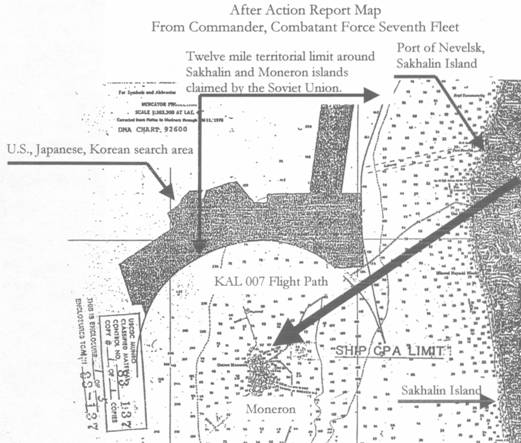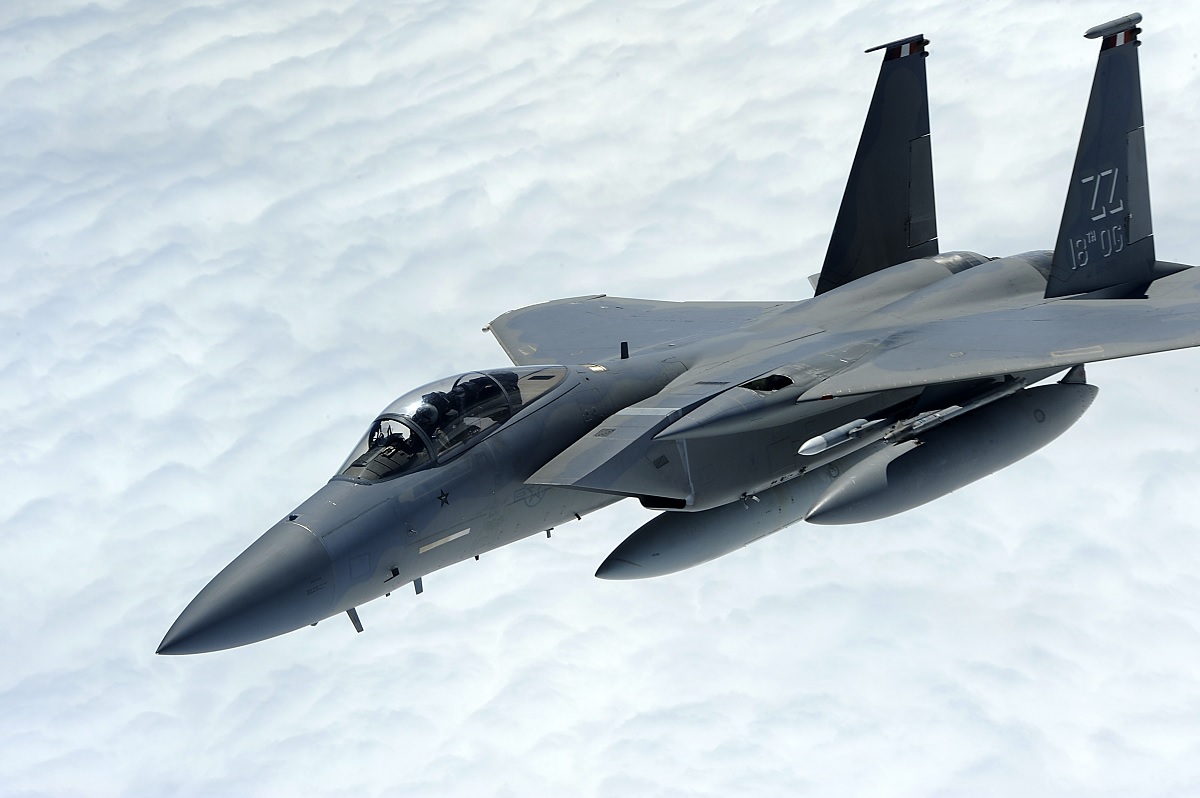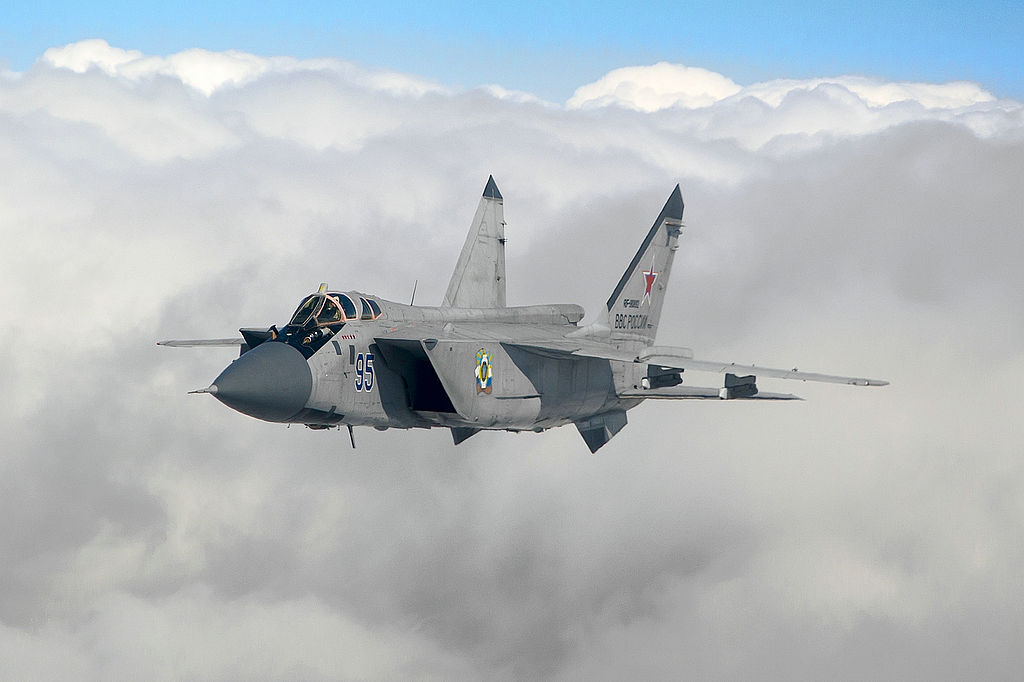Even though KAL 007’s wreckage had fallen in the Sea of Japan’s international waters, Kadena’s F-15C Eagles had to defend P-3 aircraft from Soviet fighters on the prowl while they searched for the airliner’s black box data and voice recorders
The F-15 Eagle is an all-weather, nimble tactical fighter created to give the United States Air Force (USAF) air supremacy over the battlefield. Beginning in 1979, the single-seat F-15C, an upgraded version of the F-15A, was added to the USAF’s inventory.
The brand-new F-15Cs of the 12th Tactical Fighter Squadron (TFS) / 18th Tactical Fighter Wing (TFW) were stationed at Kadena Air Base (AB), on the Japanese island of Okinawa, when Korean Airlines Boeing 747 flight KAL 007 vanished en route from the Alaskan capital of Anchorage to Seoul, South Korea, on September 1, 1983.
U.S. intelligence agencies already knew what had happened to the airliner while the world prepared for the worst-case scenario. After veering off course and flying over Sakhalin Island, it was brought down by a Soviet Su-15 interceptor. The airliner’s 269 passengers and crew all perished.

According to Steve Davies’ description in his book F-15C Eagle Units in Combat, highly-classified intercepts showed a Soviet ground controller ordering a fighter to intercept the 747 after it unintentionally entered Soviet airspace. The pilot had been directed to get quite near to KAL 007. This was because he thought it might be a USAF RC-135 Rivet Joint. No warnings were given to the crew, unlike what the Soviets later claimed; he had radioed back that the contact was not a reconnaissance aircraft but a civil airliner. He was then ordered to shoot it down.
There was a race to be the first to recover the voice- and data-recording black boxes from the crash site. At this early stage, the United States considered these as being essential to trying to disprove Soviet assertions that they had believed the aircraft to be a reconnaissance platform flying without lights on and that the fighter that eventually brought it down had fired warning shots passed the cockpit windows. The classified radio intercepts could not be publicly disclosed until much later due to the covert manner in which they had been gathered, therefore recovering data from the black box was crucial. The only reliable way to prove what happened that night was through the data recorders.
Unarmed U.S. Navy P-3C Orion patrol aircraft from Patrol Squadron Four (VP-4) and from Patrol Squadron Forty (VP-40) took part in the U.S. effort to locate the recorders. Even if the wreckage of KAL 007 had fallen in the Sea of Japan’s international seas, the P-3s needed defense against roving Soviet fighters. Selected 12th TFS pilots with their F-15Cs were sent to Misawa AB, located at the tip of Honshu Island. Indeed, the distance between Sakhalin Island, which was under Soviet control, and Misawa, where the plane was believed to have been engaged, was just 200 miles.

One of those chosen to operate the alert F-15s at Misawa was Lt Rob Graeter. He recalled: “We had a south CAP (Combat Air Patrol) and a north CAP. The southern CAP was abeam and to the west of Sapporo, on the northern island of Hokkaido. The north CAP was about 80 miles from the search area and was closer to the tip of Hokkaido. We were flying with three ‘bags’ (fuel tanks) and eight missiles (four AIM-9Ls and four AIM-7Fs), so we were not going to go any faster than Mach 1.1. What that meant was that we were about 20 minutes flying time away from the northern CAP – maybe a little less if we really pushed it.”
There were plenty of F-15 and aerial tanker resources nearby to enable the Eagles to maintain a constant airborne presence closer to the crash site (3 fully equipped Eagle squadrons were located in Kadena). However, as Davies explained, political tensions were so high that such a move would have been viewed as provocative. Instead, the six Eagles and the pilots waited for the signal to launch in response to any hostile or threatening Soviet behavior while they were on 24-hour alert.

It is noteworthy that the Soviets quickly deployed their own resources to find the recorders, with the search focused southeast of Sakhalin. Smirynkh, Dolinsk-Sokol, and Yuznho-Sakhalinsk were three Soviet fighter sites on the island that housed MiG-21, MiG-23, and long-range MiG-31 ‘Foxhound’ aircraft (the latter was a variant of the MiG-25 ‘Foxbat’). The ‘Foxhound’ represented the biggest threat, and the USAF was once again unclear about how to handle it, just as it had been with the ‘Foxbat’ years previously. In reality, the MiG-31 had only recently entered service and was still mainly mysterious.
Since Graeter was a junior lieutenant and on his first F-15 mission, he recalls: “The MiG-31s had just deployed to Yuznho-Sakhalinsk, and we had intelligence reports telling us that one had made a run from Vladivostok to Sakhalin at 70,000 ft and Mach 2.3. They told us that his load out was two radar missiles and four infrared (IR) missiles. It was pretty eye-opening to know that he had enough gas to make that run and carry his missiles.”
Russian MiG-23s harassed American Navy Orions as they combed the ocean for any evidence of the 747’s black boxes. In fact, one of the pilots was so hostile that he bumped the wings against the unarmed aircraft. The last straw was this along with reports that the airliner’s bodies were starting to wash up on the shores of nearby Japanese islands. A MiG was seen launching on the third day of the hunt as the P-3s were flying into the debris area.
In response, Graeter and his CO, Roger Taylor, were scrambled. “We started talking to AWACS and quickly detected a MiG-31 heading away from us and running northeast to southwest – Sakhalin to Vladivostok – probably 90 miles away. We climbed up in altitude in order to prepare to do something about him should he turn around and head towards the AWACS, which was northwest of Misawa.”
Nonetheless, the Foxhound passed without incident to the east. In order to effectively tackle the high-altitude, high-speed danger posed by the MiG-25 and MiG-31, unique tactics had to be used. Graeter explained: “We had trained for the high-fast-flyer threat (MiG-25) and knew that to handle that guy we’d have to dump all of our fuel tanks. We would fly a profile that involved getting to 40,000 ft, then unload the jet (pushing forward on the stick to induce 0g) in full afterburner to get it to accelerate. Once up to Mach 1.7 or so, we’d gingerly pull the nose back up to 20-30 degrees, center up the dot on the AIM-7 (align the nose with the computer-generated steering dot), and salvo all four missiles.”
But it never came to that. The P-3s would roll back away from the MiGs, the F-15s would launch, the MiGs would be informed that Eagles were airborne, and they would immediately turn 180 degrees and head for home, according to Davies, who claims that Graeter and his colleagues launched a total of 12 sorties in the days that followed. The “Floggers,” “Fishbeds,” and “Foxhounds” were often less than 80 miles away when the USAF pilots saw them on radar, but AWACS never gave them clearance to engage. The Soviets ceased pressuring the recovery force after a week, and the Eagles were home in six weeks.

The F-15 had frightened the Soviet fighter into submission while not firing a single shot. America’s Eagles had succeeded in their initial trial.
Photo by Ken H, Hansueli Krapf and Konstantin Tyurpeko (http://russianplanes.net/id161326) via Wikimedia Commons, Senior Airman Maeson L. Elleman and Airman John Linzmeier / U.S. Air Force, U.S. Navy


